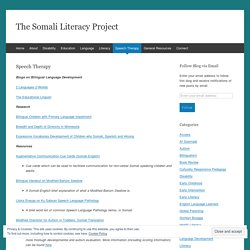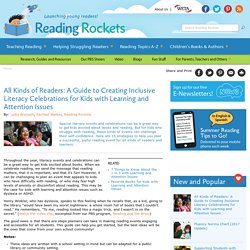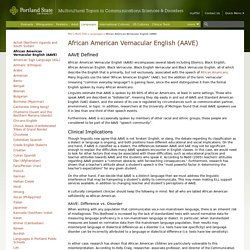

MABEL. African Storybook. LEAP-Questionnaire « Bilingualism and Psycholinguistics Research Group. Oral Language Assessment in Hindi/Urdu Speaking Children - Bilingual Project. MNSHA » Talk With Me Manual. Dynamic Assessment. Multilingual Minnesota. Bilingual Early Language Assessment (BELA) The Speech Stop. NEW THERAPY TOOL - GROW!

Language Development With Engaging Children's Stories. Check out the Bilingual Resources section or the informational flyer below for more detailed information. Story books are available in English only if you're not working with bilingual children. Available NOW! Click here to order. See Table of Contents for other story titles. Read testimonials about the ¡CREZCA! There is an excellent language resource I use as one of my main language “curricula.”
Descriptive Words – Shape, Size, and Color for use with “Creature Creator” and “It Makes Sense” sections. Discover the Pattern Analogies Summary Chart for use with “Analogies” section. Ancient/Modern Olympics Comparison for use with “Compare Contrastadon” section. Another language program I use is Strategies Offer Solutions: Language and Cognition by Ruthann Jarvis and Elizabeth Peterson. SpeakColors - Spanish Version Spanish version of SpeakColors now available!!! "This app is great! Karen Anderson, MA, CCC-SLP. The Somali Literacy Project. Blogs on Bilingual Language Development 2 Languages 2 Worlds The Educational Linguist Research.

WIDA booklet 2012 Standards Strands web. Great Resources_ Speech Therapy in Austin - Speech Pathology CEUs - Bilinguistics. ESL option Jazz chants. Miles Craven presents a series of short jazz chants – a fun way to practise stress and rhythm in the classroom, to help your students sound more natural when they speak English.

How to use Jazz Chants in the classroom You can use these jazz chants in a variety of fun ways. You can practice stress and rhythm with your class, to help your students sound more natural when they speak English. Also, because each jazz chant focuses on different vocabulary and grammar, you can also use them to review important words and structures! Here are some ideas on how to use these jazz chants with your class. Practice stress and rhythm Choose a jazz chant you want to use and make one copy of the chant for every pair of students in your class. Review vocabulary Check the vocabulary focus for each jazz chant and choose one you want to review.
Review grammar Check the grammar focus for each jazz chant and choose one you want to review.
Bilingual language development and assessment. All Kinds of Readers: A Guide to Creating Inclusive Literacy Celebrations for Kids with Learning and Attention Issues. Throughout the year, literacy events and celebrations can be a great way to get kids excited about books.

When we celebrate reading, we send the message that reading matters, that it is important, and that it’s fun! However, it can be challenging to plan an event that appeals to kids who have difficulty with reading, or who may feel high levels of anxiety or discomfort about reading. This may be the case for kids with learning and attention issues such as dyslexia or ADHD. Henry Winkler, who has dyslexia, speaks to this feeling when he recalls that, as a kid, going to the library “would have been my worst nightmare: a whole room full of books that I couldn’t read.”
He remembers, “To me, reading looked like a magic trick, and I wasn’t in on the secret.” The good news is that there are steps planners can take in making reading events engaging and accessible for all students. Notes: Defining the challenge What do we mean by “literacy celebrations”? Related videos Things to keep in mind:
Cultural Influences in Children’s Narratives. Portland State Multicultural Topics in Communications Sciences & Disorders. AAVE Defined African American Vernacular English (AAVE) encompasses several labels including Ebonics, Black English, African American English, Black Vernacular, Black English Vernacular and Black Vernacular English, all of which describe the English that is primarily, but not exclusively, associated with the speech of African Americans.

Many linguists use the label “African American English” (AAE), but the addition of the term ‘vernacular’ (meaning “common everyday language”) is gaining favor, since the word distinguishes it from the formal English spoken by many African Americans. Linguists estimate that AAVE is spoken by 80-90% of African Americans, at least in some settings. Those who speak AAVE are described as “bidialectal”, meaning they slip easily in and out of AAVE and Standard American English (SAE) dialect, and the extent of its use is regulated by circumstances such as communication partner, environment, or topic.
Clinical Implications AAVE: Difference vs.